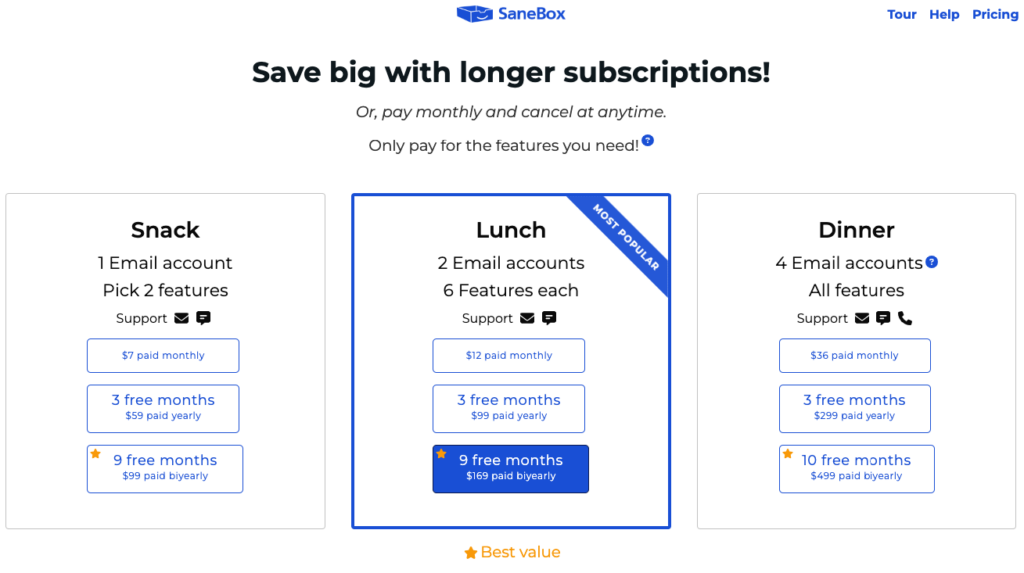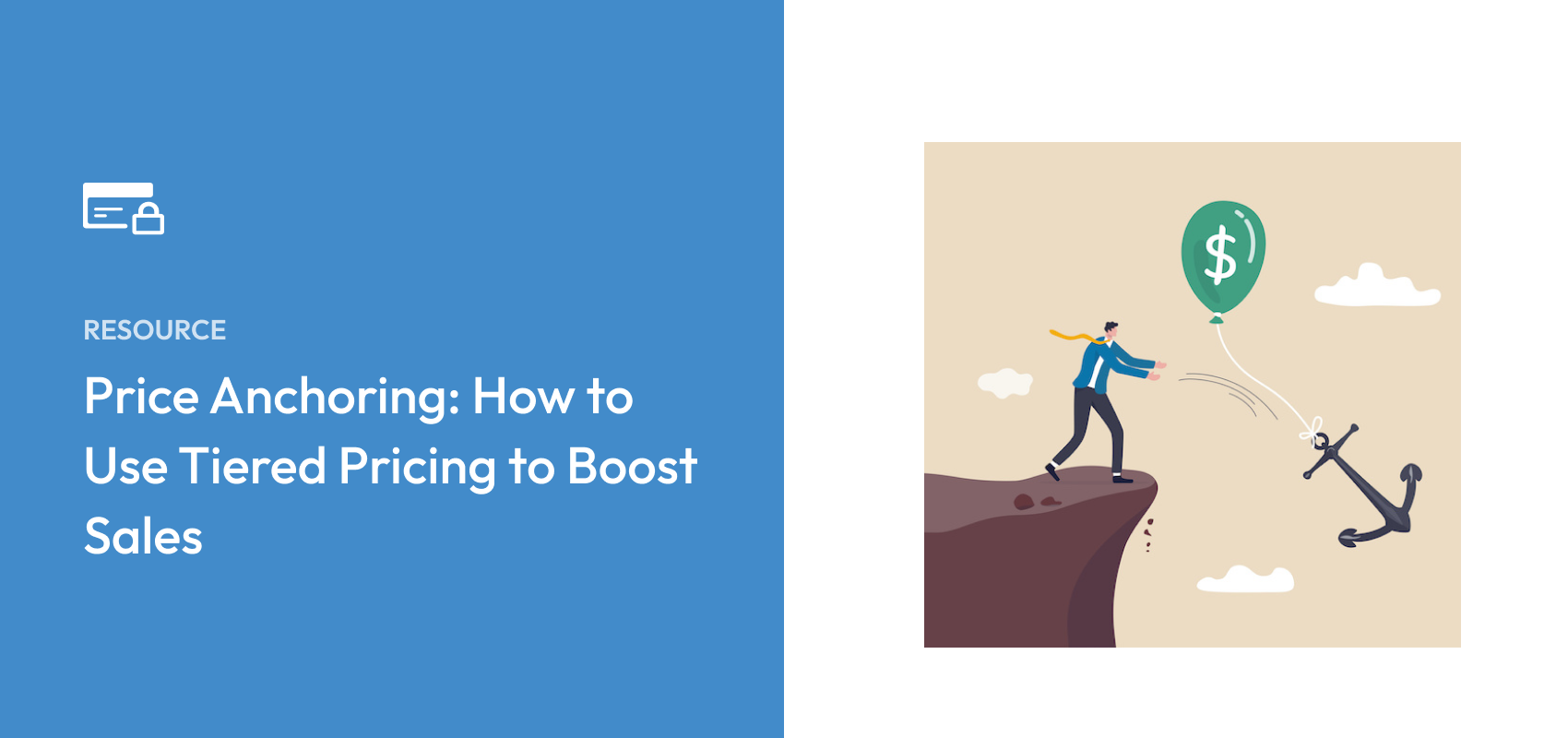Price Anchoring: How to Use Tiered Pricing to Boost Sales
Last updated on
Do you want to use price anchoring to influence sales on your WordPress site?
While there are many price anchoring techniques, tiered pricing is a highly effective strategy that can be used to influence how your visitors feel about a price.
In this article, we’ll go over the psychology of price anchoring, how it works, and how you can put it into practice.
In This Article
What is Price Anchoring?
Price anchoring is a strategy for pricing products and services that relies on the primacy effect. The primacy effect is a cognitive bias that causes people to better remember the information they first encounter rather than information that is presented later.
Sounds a bit complicated, but here’s a quick example to get you up to speed.
When Steve Jobs announced the first iPad, he told the crowd that analysts predicted he would sell it for $999. He put $999 on a big screen and let it sit there while he spoke.
When it came time to reveal the actual price, the $999 was lowered to $499. With a simple animation, everyone in the room felt like they just saved $500.
Interestingly, no one in the room had any idea what an iPad was worth. How could they? It was a brand-new product. Yet somehow, they felt like they had the opportunity to buy it for less than its value.
Imagine if Steve Jobs presented the price the other way. Let’s say he put $199 on the screen and later increased it to $499. Everyone in the room would feel like they just got fooled, even though they were never going to get the iPad for $199.
Like a lot of great marketers, Jobs used price anchoring to influence how people felt about a price.
Luckily, you don’t have to be a tech giant to take advantage of this psychology hack. It’s actually a pretty simple concept for most businesses to implement.
How Price Anchoring Works
As customers, we perceive prices relatively. The first piece of information creates a frame of reference for all subsequent pieces of information.
This means you can use the first price your potential customers see to influence how they feel about subsequent prices. High initial prices direct their attention to the product’s positive qualities. Low initial prices direct their attention to the negatives.
If you think that lacks logic, you’re right. This is because logic is only part of how we evaluate purchases. It’s been scientifically proven that we make economic decisions with the same part of our brain that determines our emotions.
The real magic of this effect is that it works even if you are aware of it.
In one study, real estate agents were asked to appraise the value of a house. All the agents presented estimates similar to the house’s list price, even though they denied factoring the list price into their decision. They knew the list price would influence their decision, so they tried to ignore it, but that awareness wasn’t enough to counteract the anchoring bias.
An Everyday Example of Price Anchoring
Here’s an example of price anchoring we all deal with every day.
Gasoline prices fluctuate regularly, but they generally trend upwards. They might fall a little this month based on some global event, but for the most part, they increase over time. At one point in the U.S., gas prices jumped to $4/gallon, which was quite painful.
We all cheered when gas prices started to fall. Suddenly, $3.89/gallon felt like a great deal, even though the price was $2.89/gallon the year before. Why did a slight drop from an unusually high price feel like a bargain, even though we paid considerably less in the past?
We feel this way because each price we pay resets our anchor. We compare today’s price to the previous price, not the price we paid five years ago or the one time we bought super cheap gas on that road trip through the middle of nowhere. So, now we look forward to paying prices we would have once thought were outrageously high.
Price Anchoring in Marketing
Gasoline is an everyday example because it’s a commodity we consume often. You probably know the prices of a few gas stations around your home or work. We have a fair understanding of its value and why its price rises or falls.
However, what about less familiar products? What happens when we have to evaluate the price of a new product or service? We can’t maintain anchor points with everything like we have with gas.
We create price anchor points as soon as we start considering purchasing. This means some anchor points are only seconds old by the time we make a decision. Other anchor points are weeks or months old, depending on how long it takes us to get through our buying process.
For example, let’s say you’re looking for someone to manage your social media marketing. What’s a good price for that? It’s hard to say, especially if you’ve never purchased that service. Additionally, all social media marketing isn’t the same. It’s hard to compare one service to another.
In this case, your brain lacks a clearly established anchor, so it would create one based on the first price you see. You will subconsciously compare all subsequent prices to that first price, even if the first price was an outlier.
Marketers often do this by offering multiple variations of the same product at different price points. The first one you see engages the primacy bias and affects whatever you see after.

Let’s say a social media marketer offers to create 30 posts per month for $500. Or, she’ll create 25 posts per month for $400. You don’t think those last five posts are worth the extra $150, so you go ahead and choose the smaller option. The seller wanted this because $400 seemed like a bargain compared to the $500 service.
Price Anchoring in Practice
In order to implement price anchoring, you just need to show more than one price. The first price will influence the second price. So you have two options:
- Make the first price high to create a perception of high value. Then, make the second price low so the customer thinks they get high value for a bargain.
- Make the first price low to create the perception that the customer is getting a deal. Then, make the second price higher so the customer associates the bargain with the products you want them to buy.
The first method is obviously more common. Marketers want their customers to think their products and services are as valuable as possible. High perceived value + reasonable price = customers rush to buy.
The second application is less common but useful when customers are especially price-adverse. An example of this kind of price anchoring is when stores show the prices of products without the tax calculated.
If you don’t have multiple prices and aren’t willing to create variations of your products, think about other price values you can display on your website. You could compare your service to your competitors or to other kinds of solutions. Or, you could show the costs your customers would incur if they wait too long to purchase a solution.
If you’re using WP Simple Pay to accept online payments, you can integrate your payment forms with popular WordPress page builders like Divi and Elementor to create pricing tables that use tiered pricing.
See our step-by-step guide to learn more: How to Create High-Converting Pricing Tables in WordPress.
Going Forward
Price anchoring can effectively nudge the needle to boost your conversion rates.
Remember, customers will feel more comfortable about making a purchase if they feel like they’re getting a deal. Be sure to combine price anchoring with other behavioral marketing techniques, like urgency, scarcity, and reciprocity, for powerful results.
There you have it! We hope this article has helped you learn more about how you can use price anchoring and tiered pricing to influence your potential customers’ purchasing decisions.
If you liked this article, you might also want to check out Why Should You Join an Online Marketing Community?
What are you waiting for? Get started with WP Simple Pay today!
To read more articles like this, follow us on X.
Disclosure: Our content is reader-supported. This means if you click on some of our links, then we may earn a commission. We only recommend products that we believe will add value to our readers.


